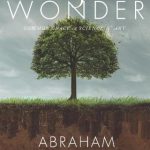Reviewed by Paul M. Gould
Given the secular shift in Western culture, there is renewed interest in art as a means to
rekindle that sense of awe and wonder once reserved for God. There is also renewed interest in
the dialogue between theology and art. That discussion typically proceeds at the level of a kind
of generic spirituality, however, devoid of any particularities of one religious tradition or
another. In Redeeming Transcendence in the Arts, Duke theologian Jeremy Begbie argues that
this common approach is problematic. Bebgie thinks a theology of transcendence rooted in a
“scriptural imagination” as well as “the creedal traditions that resonate with them” (p. 3)
reveals a much richer picture and a tighter link between art and the divine than the common
secular and religious approaches suggest.
In chapters one and two, Begbie explores the pervasive idea that art and the aesthetic
experience, including the experience of the sublime, is a faithful witness to a divine presence.
Four unquestioned assumptions found in much of this thinking, according to Begbie, impinge
our ability to appreciate the role of art in mediating the divine. The four problematic
assumptions have to do with human limits, the particularity of religion, the innate capacities of
human perception, and the determinate nature of the Godhead. First, it is typically assumed
that we can only (or best) discover the nature of divine transcendence when we’ve arrived at
the limit of our own rational and imaginative abilities. The second pervasive assumption is that
God’s particular redemptive activity in the world plays no role in how divine transcendence is
understood. The third, according to Begbie, is the a priori assumption that humans possess an
innate and intact capacity to apprehend and respond appropriately to God. Finally, it is
assumed without argument that divine transcendence can be generically theorized without any
loss of meaning or content. Any particular attributes of deity—e.g., God’s triunity—can be
grafted on later without substantial change in the previously developed theology of
transcendence.
Begbie argues that a detailed look at “some of the ways in which Scripture’s unsettling
strangeness can form and reform our understanding of divine transcendence” can provide a
richer understanding of the “transcendent potential of the arts” (p. 78). In chapter three,
Begbie adopts a broad and traditional notion of transcendence that highlights the otherness
and uncontainability of God. A problem with most accounts of transcendence (as otherness) is
that transcendence is defined “in purely negative terms, as if it were implying no more than
that ‘God is not the world’” (p. 80). A close look at the Biblical text, especially in John’s prologue
(“In the beginning was the World”—John 1:1), reveals an eternal “withness” within the divine
being, a unity of divine persons in being, word, and loving action. “God’s transcendence over
the world is a function of love-in-action (p. 86). In handing over the act of creation to the Word
(John 1:3), “the Father’s love ‘gives space’ to the Son . . . . opening up room for him to
participate in God’s supreme act, the creation of the world” (p. 87). In creating something that
is not God, we see a “turning outward” of the eternal love of Father and Son. Thus, Begbie
argues, “transcendence (as otherness) has nothing to do with separation or disengagement, let
alone indifference; it is redolent of God’s unswerving commitment to what God has made” (p.
89).
Attending to the question of God’s uncontainability, it is tempting to think of God’s infinity in
purely quantitative terms: God’s infinity with respect to time just means God exists without
beginning or end; God’s infinity with respect to space just means that God exists without
(spatial) limits. The problem with this view, according to Begbie “is that there is little to prevent
God’s uncontainability from being regarded as morally neutral, or even fickle—at worst, a sign
of God’s desire to be independent” (p. 103). Reflection on the living generativity of God—“in
him was life (John 1:4)—and the outward momentum of the Holy Spirit in the New Testament
reveals a different picture of divine transcendence as uncontainability: “God’s infinite life . . . as
a life of generative outgoingness, rooted in the triunity of God” (p. 102). This biblically informed
vision of divine transcendence is unsettling good news. “That God is other than the world
speaks of the Creator’s commitment to a world whose integrity and flourishing matter to God. .
. . That God is not the world means that God can be for the world. Likewise, that God is not
containable by the world means that God is able to relate actively to the entirety of the world
as a God of renewing grace, and that God cannot be finally overcome by the world’s horrors”
(p. 121). These considerations also give us reason to reject the four default assumptions that
govern much of the thinking on the transcendent potential for the arts and point to a richer,
Trinitarian, approach to the arts.
The central question of the book—how do the arts witness to divine transcendence?—is now,
in chapter four, recast: “How might the arts be caught up in the self-witness of God to God’s
own transcendence” (p. 129)? The transcendent power of art, aided by Scripture’s insight,
should not be understood as the power to transport us out of the finite and material to some
ethereal plane. Rather, “the arts testify to the transcendence (otherness) of God most potently
when they are fully creaturely, when, through the agency of the Holy Spirit, they point to, share
in, and contribute to the created world becoming more fully itself” (p. 131). A biblical vision for
art affirms the goodness, the otherness, and the creatureliness of the finite and material world.
This understanding of art points to the power of art to re-enchant the world, helping others to
see that things are “more than they are” (pp. 137-39), they are sacred, they are gift, and they
have a future as part of God’s good creation.
When it comes to transcendence as uncontainability, the arts “can serve as unique and
compelling witnesses to the fact that the finite world we inhabit always exceeds our grasp,
always outstrips our representations of it” (p. 161). This is because art discloses reality at a
register that is not reducible to propositional knowledge alone, yet is inexhaustibly evocative
and “boundlessly allusive” (p. 160). It is difficult to put into words, for example, the meaning
conveyed in a dance or to exhaustively capture the layers of meaning in artistic representations
of even mundane items (witness the philosophical debate over the meaning of van Gogh’s 1886
painting of worn-down shoes, as debated by the likes of Heidegger, Schapiro, and Derrida). In
challenging our reductionistic impulses, art “unselves” us and “can remind us that we are not
God” (p. 164).
Begbie’s Redeeming Transcendence serves as a plea and an invitation. It is a plea to ground our
theology of art and divine transcendence firmly within the orbit of the triune, generative, living
God. It is an invitation to move beyond the bland metaphysics of a disenchanted, reductionistic
(neo-Humean) culture and, with the Spirit’s help, to see and delight, through the art we make
and receive, the world as gift.



